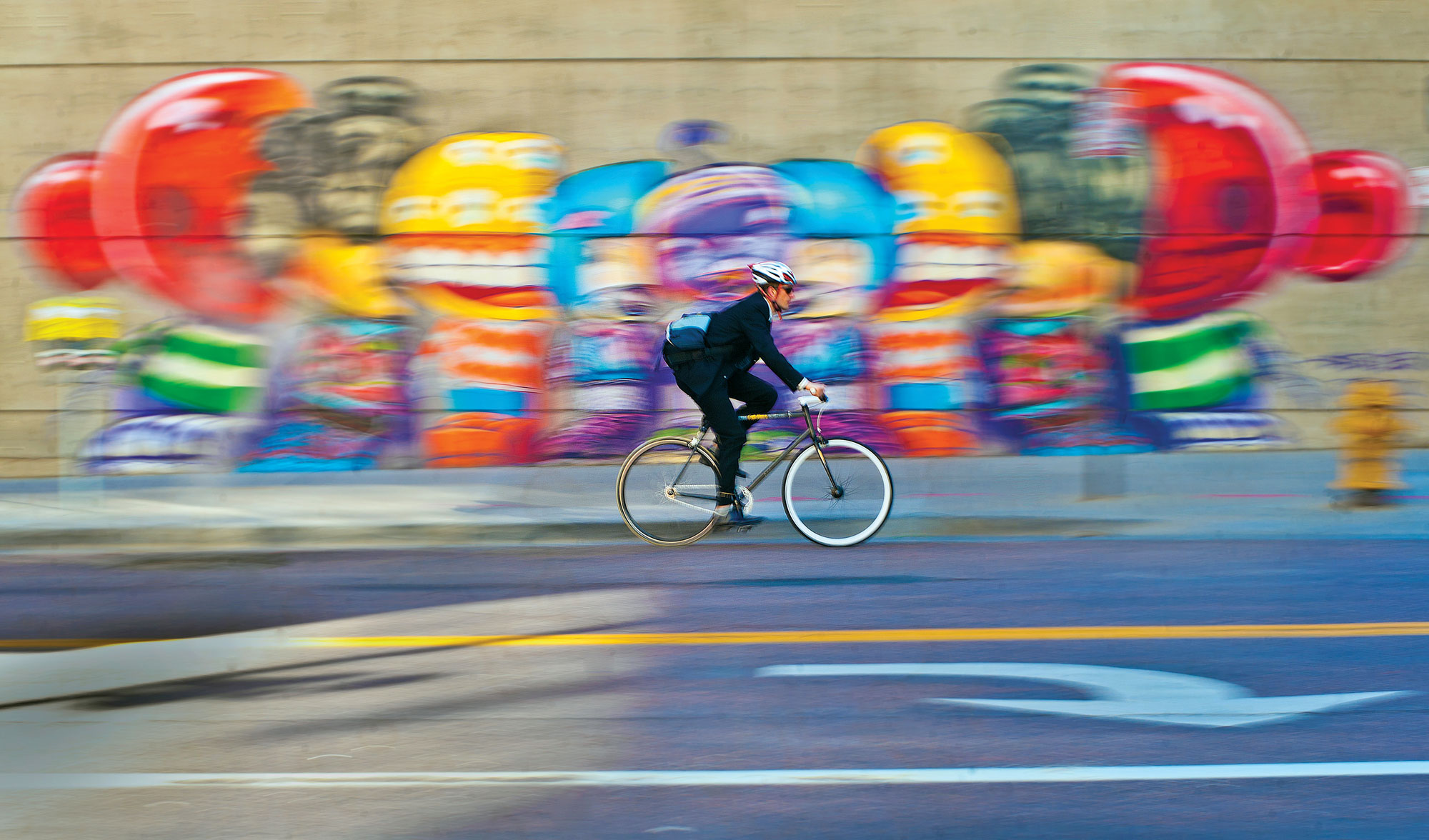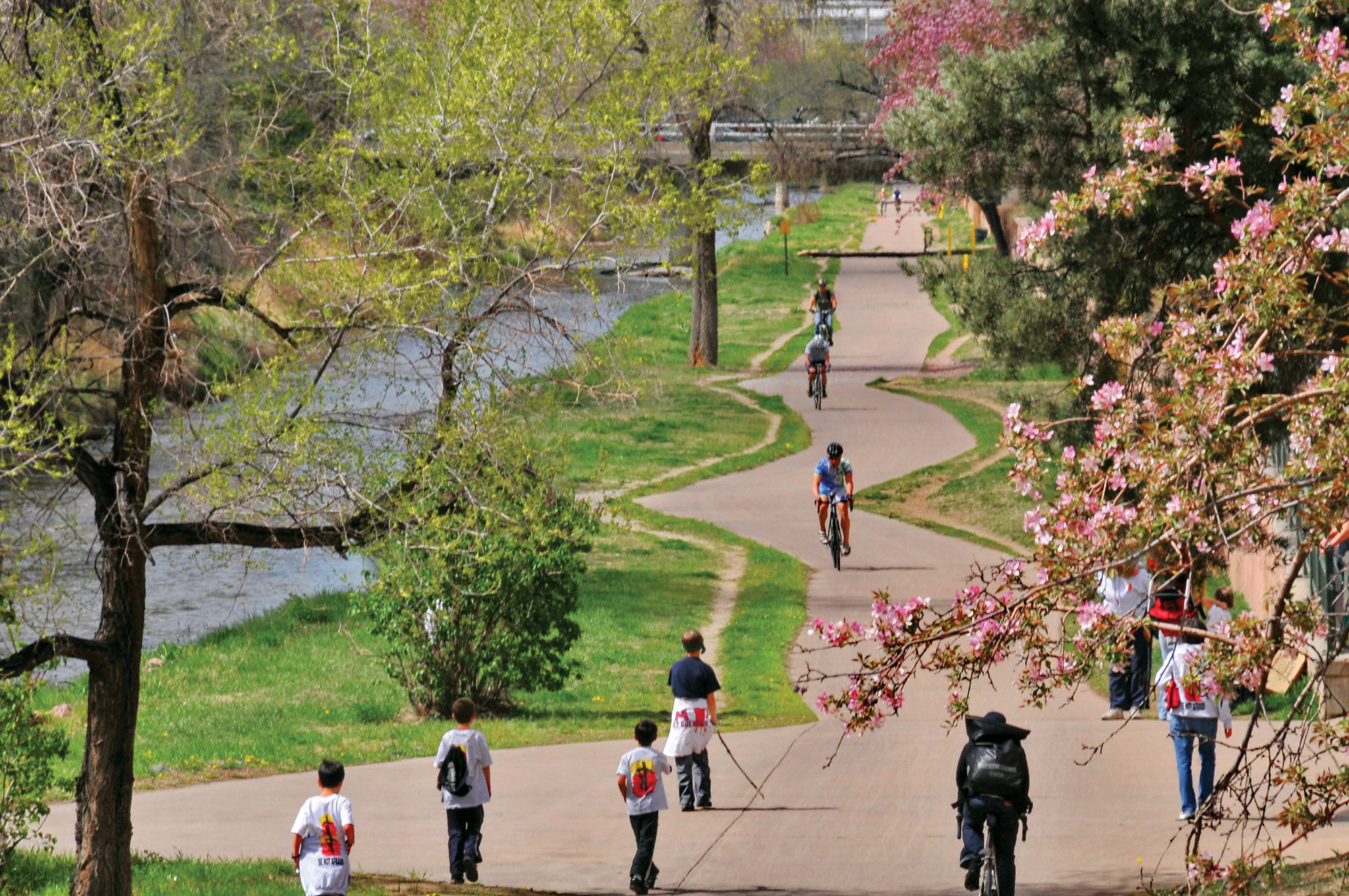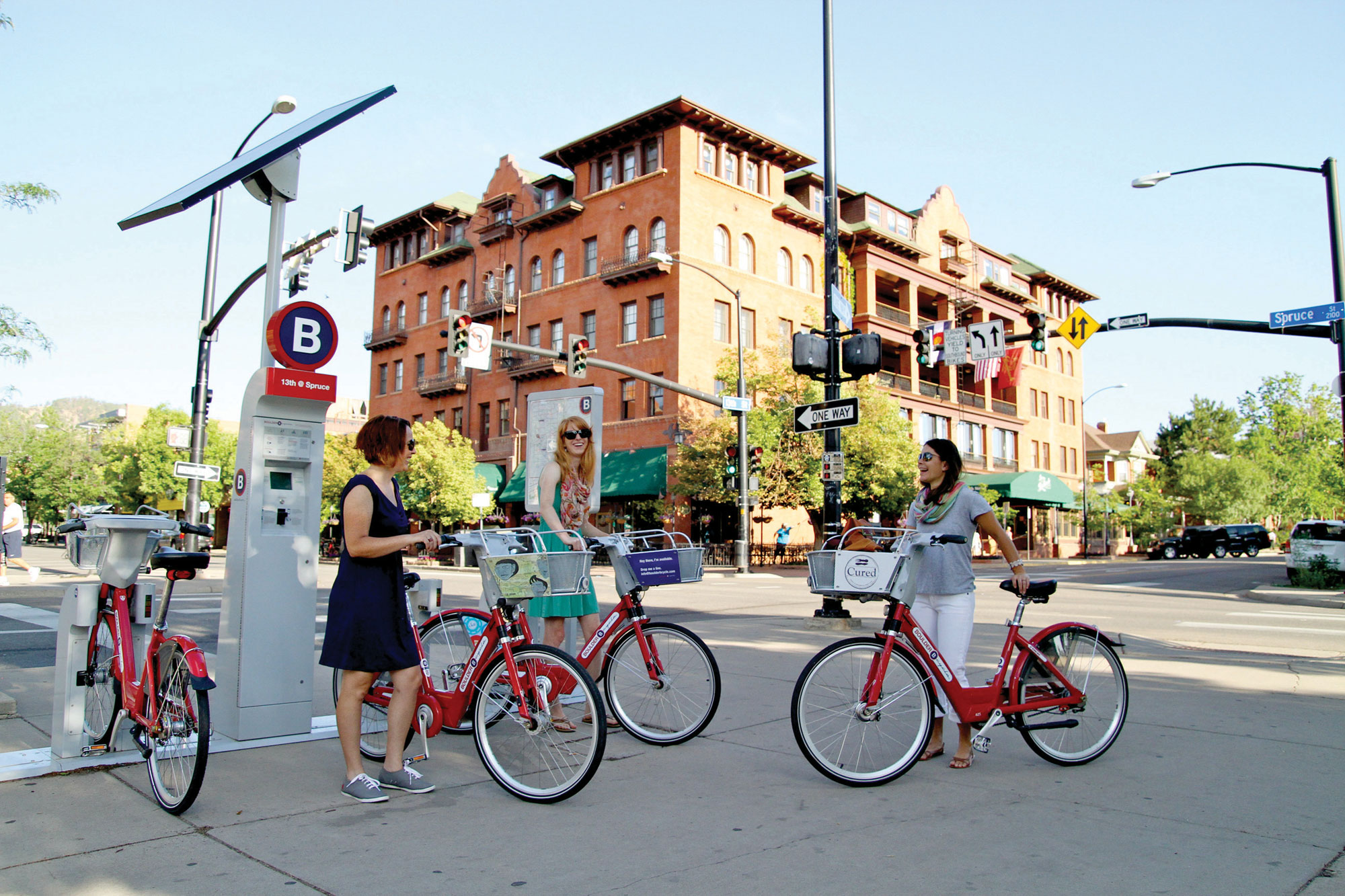From high-tech gadgets to digital exercise classes, technology continues to change the way we work out.
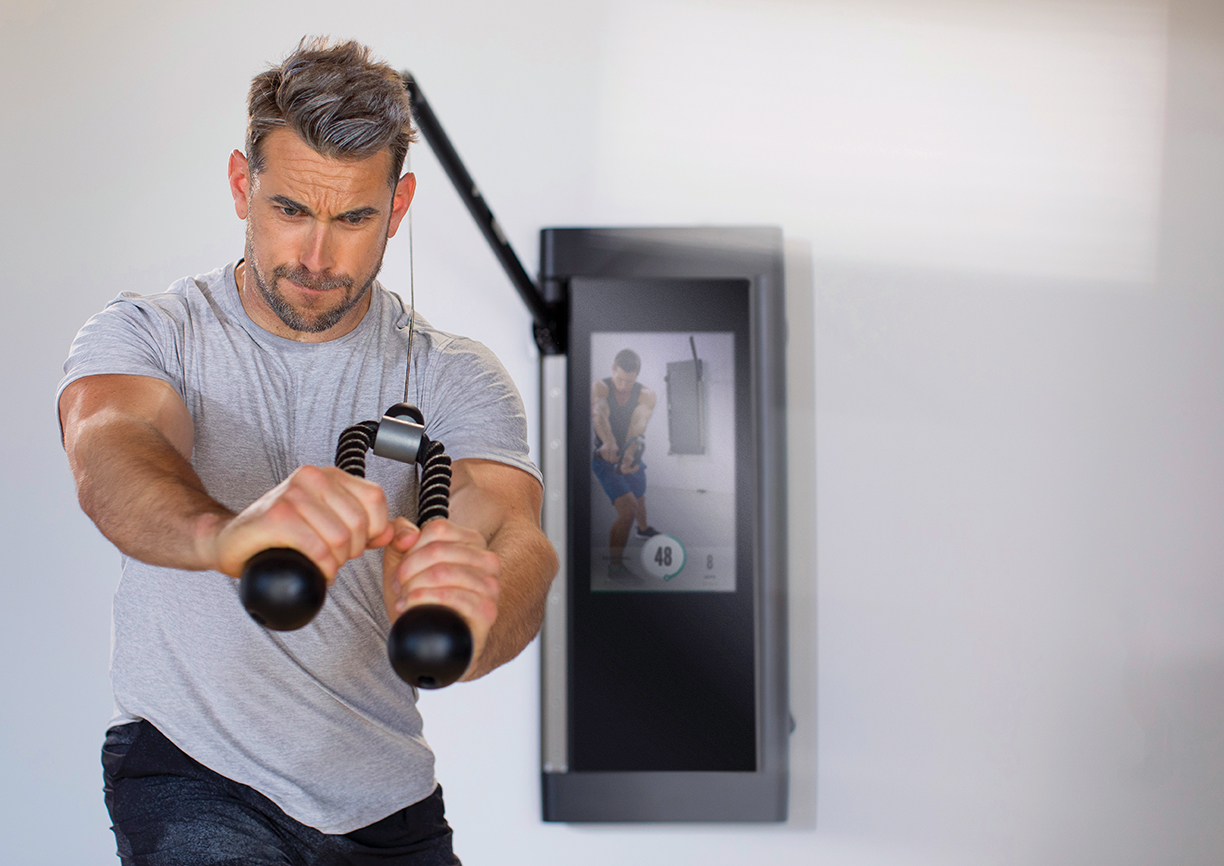
Tonal is an all-in-one fitness system that uses machine-learning to curate a personalized workout.
Whether you’re at home or visiting the gym, technology plays a crucial role in modern-day fitness. Fitness studios and gyms across the world have embraced technology — like virtual reality or integrated LED lighting — to create innovative, immersive workouts.
As the fitness industry continues to adapt, the home workout evolves even more rapidly. With virtual kickboxing classes, adjustable dumbbells, or comprehensive fitness apps, there are thousands of ways to work out from the comfort of your own home. “Technology has allowed the convenience of an at-home workout,” says Chris Stadler, CMO of Tonal. “At-home fitness equipment gives people a lot of time back, and time is increasingly our top commodity.”
While technology may decrease the need for face-to-face contact with a trainer, it offers a level of unmatched personalization. Technology can curate your fitness plan, track your form as you run, and adjust your weights digitally as you work out. “At-home fitness technology has evolved to meet consumers where they are and on their own terms,” says Amanda Murdock, director of fitness at Daily Burn. “Working out from home allows people a new level of convenience and customization when it comes to meeting their fitness goals.”
Live-Streaming Fitness
Digital workout videos — particularly live-streaming fitness classes — are a great alternative to guided, group fitness instruction. Working out alongside a
personal trainer in real time adds a level of personalization and comfort to a workout. Programs like Daily Burn make it easy to get the workout you want when you want. “At home, you can find any type of workouts that work best with your schedule and at your specific level,” says Murdock. There are many ways to stay active — whether it’s with Pilates, yoga, or high-intensity interval training. “Streaming and on-demand fitness programs like Daily Burn allow more people to begin their fitness journeys without a sometimes-pricey gym membership or access to boutique fitness classes.”
Total-Body Workout Machines
High-end technology allows for a superior workout with much less equipment. An innovative, compact device can remove the need for a room of exercise machines or a basement filled with big, bulky weights. Tonal uses digital weights that can be adjusted easily by a single pound — making for a more precise workout. Smaller than a flatscreen TV, the device makes thousands of calculations a second to deliver up to 200 pounds of electromagnetic resistance. “Tonal will know you better than any personal trainer would at a fraction of the price,” says Stadler. “We’ve seen Tonal completely change people’s lives and their fitness routine. It takes all the guesswork out of strength training.”
If cardio is more your speed, there is Peloton — another well-known, high-tech, total-body exercise machine. Whether you prefer the Peloton Bike or the Peloton Tread, the built-in touch screen and sound bar will make it easy to immerse yourself in the live-streaming workouts.
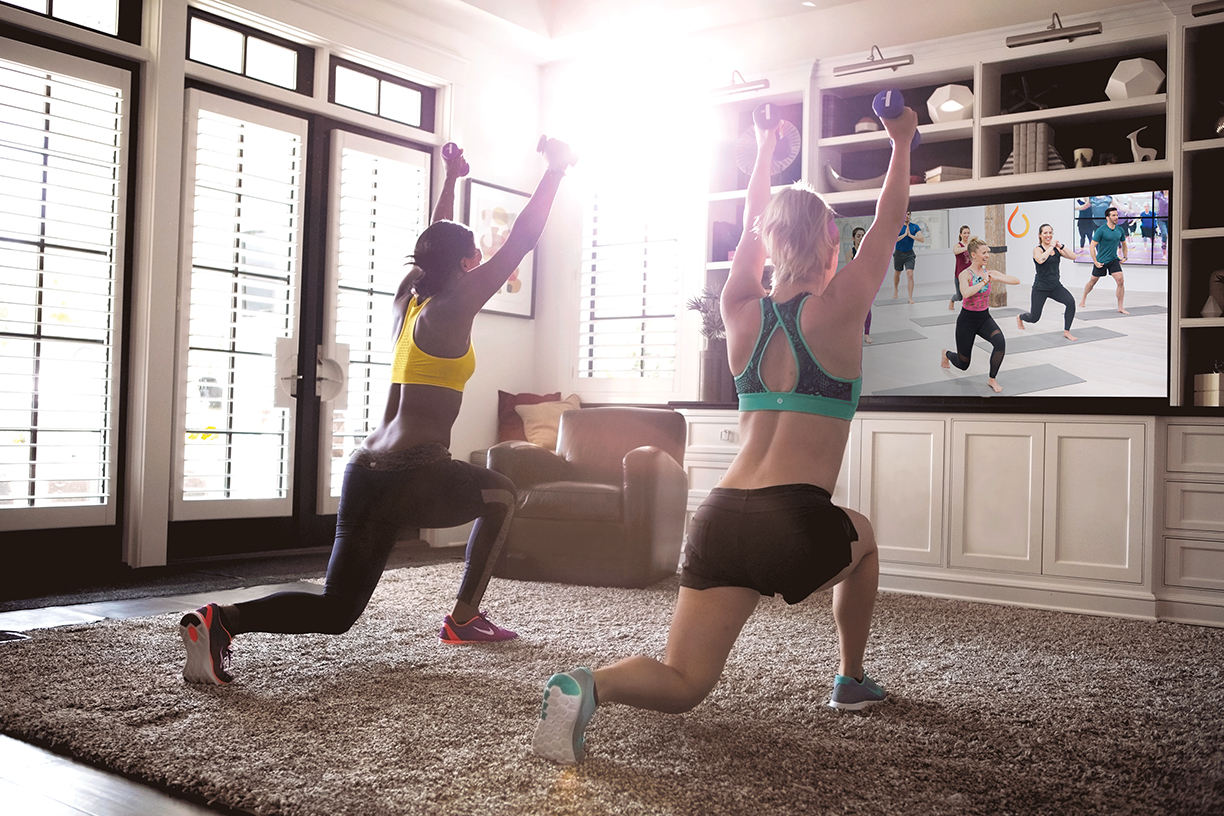
A subscription with Daily Burn offers digital workout classes and live-streaming fitness.
Fitness Apps
Modern-day technology has led to the creation of countless fitness and health apps, making it easier to work out from home. “Gym time can be hard to find, but more often there is time for a quick workout at home,” says Lisette Fabian, co-CEO of 8fit — a holistic health app that offers a number of fitness plans. A quick self-assessment on 8fit will help to match the user with a fitness plan, and interactive elements help to further predict your preferences and needs. “Apps like 8fit are providing a very personalized experience, so that the user gets the best results possible,” says Fabian. The app curates fitness plans that consist of 6 workouts — from yoga to boxing — within a 2-week period. Users also have access to healthy meal plans, as well as self-care guidance, stretching exercises, and sleep meditation.
Virtual Reality
High-tech fitness, like the power of virtual reality, is a great way to create an immersive, full-body workout for those who bore easily while exercising. The world’s first virtual reality gym, Black Box VR pairs virtual reality technology with resistance training, gaming principles, and high-intensity cardio to redefine your workout. Step into a Black Box room with a customized headset, where your fictional reality will come alive. “We are big believers in pairing the immersive power of virtual reality technologies with modern exercise science principles to help people stick to their fitness goals and ultimately level up their lives,” says Preston Lewis, CCO and co-founder Black Box VR — which has its first boutique gyms in San Francisco with plans to expand. “Innovations in the technology will also drive prices down, allowing Black Box technology to be accessible from the comfort of your own home,” says Lewis regarding the future of Black Box VR.
Fitness Trackers
Fitness trackers and watches have made it easier to work out on your own without the help of a trainer. Whether you’re biking, running, or swimming, devices like Moov Now can track your form, offer encouragement and suggest improvements.
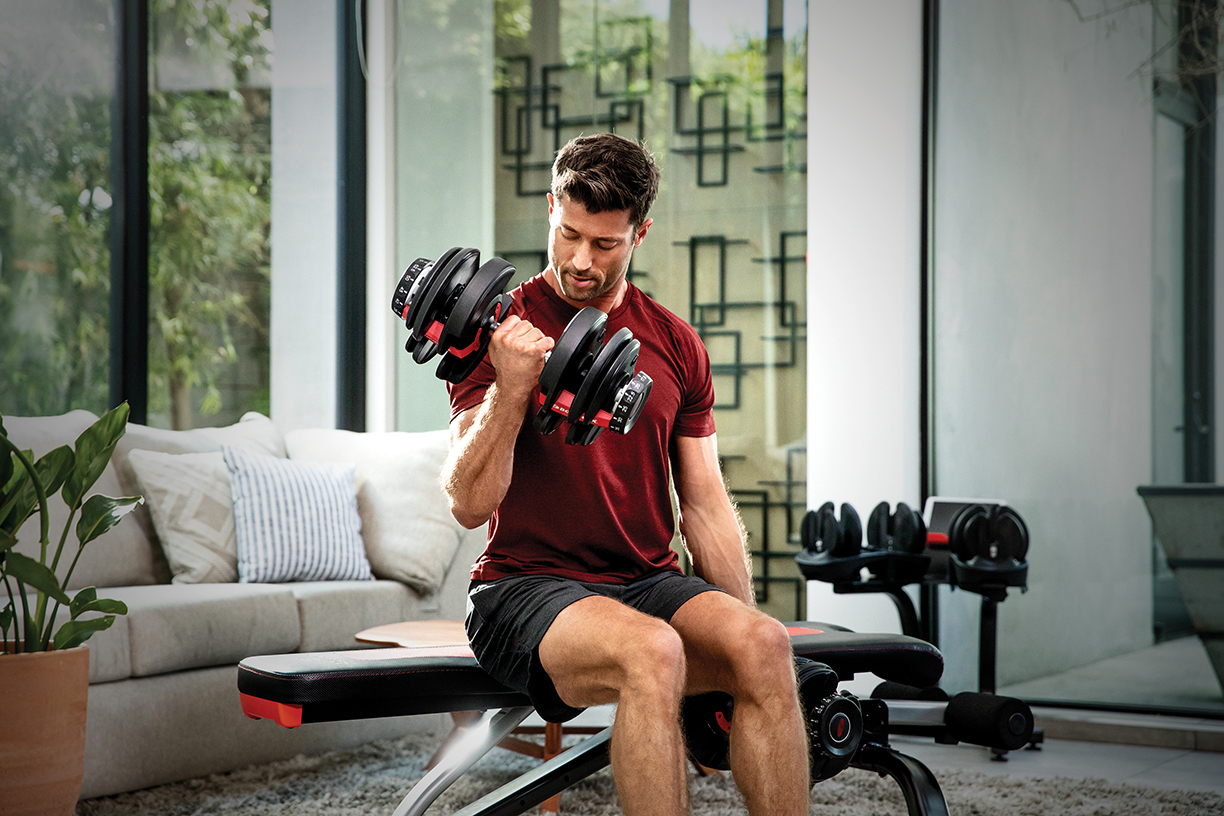
High-tech equipment like the Bowflex adjustable dumbbells make it easier to workout at home.
Adjustable Dumbbells
Whether you don’t have the space to store a full set of weights or you simply love the ease of high-tech fitness, it may be time to invest in adjustable dumbbells. The Bowflex SelectTech 552 Dumbbells will replace 15 sets of weights; technology allows the dumbbells to easily adjust from 5 to 52.5 pounds. Users can quickly modify their resistance and gradually increase strength while using the app. “Right now, adding structure is more important than ever — especially when it comes to staying active,” says Tom Holland, Bowflex fitness advisor. “It’s vital for your well-being to establish healthy habits now, which is where technology steps in to support.”
Active lifestyles are driving consumer demand for walking and biking trails, causing developers and urban planners to rethink transportation.
By Camilla McLaughlin
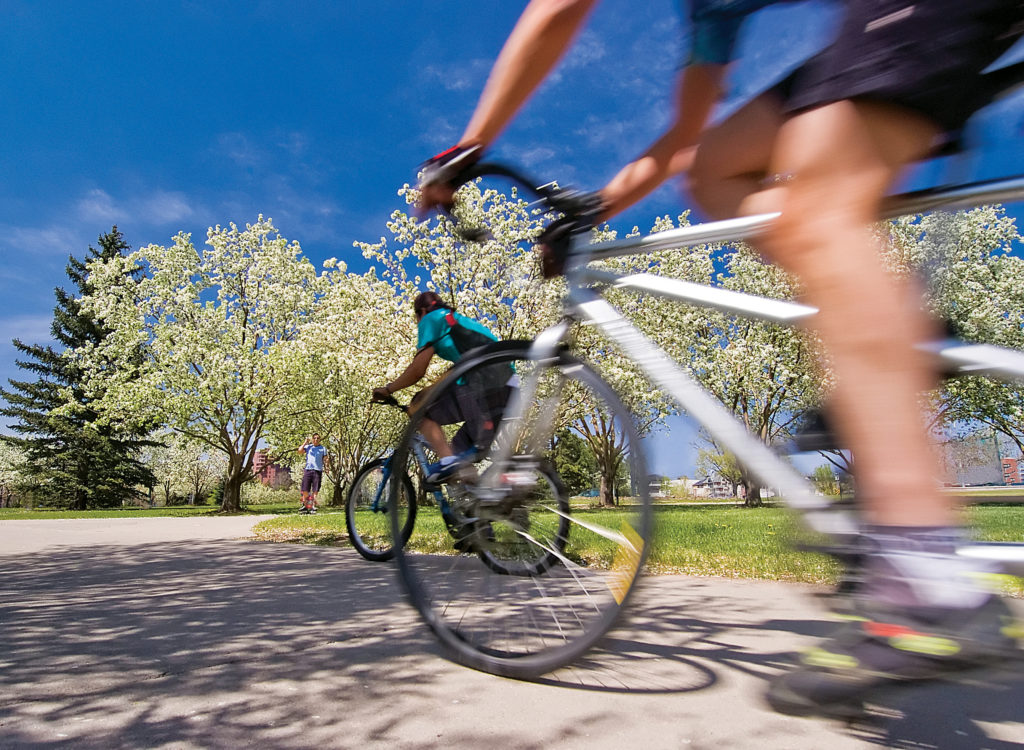
Photo courtesy Visit Denver; ©Stevie Crecelius
What will shape cities of the future? Infrastructure, say experts at the Urban Land Institute (ULI).
ULI and a number of urban planners expect new modes of transportation such as shared cars and self-driving vehicles to change everything in cities, from the number of parking spaces to traffic. But these options are only a small part of transportation’s new paradigm, which takes into account multiple modes of navigation, especially in urban centers. Already a number of cities are committed to this vision, and are developing infrastructure to diversify transportation. Fourteen cities have heavy rail; 28 have light rail, which is growing fastest in the Southwest; and rapid bus transit is a reality in 36 cities.
Now planners and developers are also looking closely at bicycling and walking, which they consider active transportation. Not only are cities building trails and safer roadways for bikes, but a new generation of offices, mixed-use communities, and even resorts, incorporate biking and walking into the lifestyle they offer. And developers and homeowners are discovering these amenities have a big payoff. According to ULI, studies show that direct access to trail, bike-sharing systems, and bike lanes positively impact property values. As an example, they point to homes within a quarter mile of the Radnor Trail, part of Philadelphia’s Circuit regional trail network, where values on average were $69,000 higher than other area properties.
“Bicycling has recently undergone a renaissance in locations across the world, with an increasing number of people taking to the streets by bike,” observed the authors of a new report on active transportation published by ULI.
Worldwide, two-wheeled vehicles have traditionally been an accepted means of transportation, but usage has skyrocketed in recent years. Transport London found cycling in the city recently reached its highest rate since it began keeping a record. Bicycles outnumber cars on the road in Amsterdam, with the number of local trips increasing by more than 40 percent since the 1990s. In Copenhagen, the first two phases of a 311-mile network of cycle superhighways have been completed. Right now these two completed routes connecting the city with suburbs have between 3,500 and 4,000 users per weekday.
In the U.S., bicycling and walking were not historically considered part of the transportation continuum, but infrastructure improvements and the addition of bikeways and walking trails such as the High Line in New York or the BeltLine in Atlanta are boosting interest and moving walking and biking into the transportation conversation. “Cities that are investing in bike infrastructure are seeing big increases in bike use,” said Ed McMahon, coauthor of “Active Transportation and Real Estate, The Next Frontier,” speaking at a panel on trail-oriented development at ULI’s spring conference.
There is good reason that walkable has become real estate’s newest mantra. According to ULI, 50 percent of U.S. residents say walkability is a top priority or a high priority when considering where to live.
Build It and They Will Come
U.S. Census Bureau data shows that the number of people who traveled to work by bike increased by roughly 62 percent between 2000 and 2014. But ULI found that rates generally exceed the national average when cities invest in bicycle infrastructure, including new configurations for bike lanes, an increased number of protected bike lanes, and trail systems.
It’s no accident that Portland, Oregon, has the highest bicycle commuting rate among large U.S. cities — 7.2 percent compared to the less than 1 percent on the national average. That is a 400-percent hike since 1990. Transit in that period only increased by 18 percent, while driving declined 4 percent. The catalyst was a 300-mile network of bike trails, bike lanes and bike boulevards. The cost in 2008 was approximately $60 million, about the same as a single mile of a four-lane urban freeway.
Minneapolis, where 4.7 percent of the residents commute by bike (the second highest rate in the U.S.), has a long-term goal of having 15 percent of citywide transportation be by bike, and ULI’s experts say that’s not an unrealistic goal. Copenhagen and Amsterdam have bicycle commuting rates exceeding 40 percent.
Portland and Minneapolis may be setting the pace, but a number of other cities including San Francisco, Washington, D.C., Philadelphia and Chicago report growing interest in biking, not just as a sport, but as a viable mode of urban transportation.
Banking on Biking
In recent years, the focus for planners has been transit-oriented development — mixed-use communities clustered around transit hubs. Some new communities are taking this a step further and adding active transportation, walking and biking, to their lifestyle focus. Hassalo on Eighth, a mixed-use project in Portland, Oregon, combines transit-oriented and trail-oriented development. Located near major bike routes and also with access to transit and light rail, it is the largest residential development in the city. With parking for 1,200 bikes, it also houses the largest bicycle parking facility in North America, open to both residents and area employees.
Bike amenities at Hassalo on Eighth are similar to those offered in a number of new communities across the country, and include on-site bike valet service, with bike tune-ups an option. Vending machines make parts for simple repairs readily available. And shower and locker room facilities will enable local bicyclists to change and shower after commuting.
In Atlanta, along the award-winning Atlanta BeltLine, a burgeoning 22-mile network of public parks, multiuse trails and transit facilities, new developments promoting a car-free lifestyle are springing up. Post recession, Ponce City Market, a mixed-use development in a historic warehouse adjacent to the Atlanta BeltLine, is the city’s largest redevelopment project. A walkway connects a new public plaza, the development and the trail, promoting access for both bikes and pedestrians. Jamestown Companies, the project’s developers, observed: “Ponce City Market’s direct connection to the BeltLine is one of the best amenities we have to offer our communities. It is not only an easy way to access the market’s amenities, it also provides our tenants with a great green space that connects them directly to growing neighborhoods.”
Many of the bike amenities at the Ponce City Market are shared by other new, trail-oriented communities. Five hundred spaces allow ample parking for residents and visitors in a secure facility. The development includes retail space and a large central food hall with venders and restaurants, which also makes it a destination on the BeltLine. A free service enables visitors to ride up to the building and leave their bikes with the entrance valet. Hallways and elevators are extra wide to accommodate bikes, so residents can maneuver bikes around the properties. And a bike workroom makes it easy for residents to repair bikes.
In Minneapolis, MoZaic, a mixed-use office building, was developed facing the Midtown Greenway, a 5.5-mile commuter trail that connects to the Uptown Transit Center. To ensure access, the developer, the Ackerberg Group, worked with a nearby development and local officials to construct a bicycle and pedestrian bridge to the Midtown Greenway.
The Flats at Bethesda Avenue in Bethesda, Maryland, a mixed-use development on the site of a former parking lot, is located along an 11-mile Capital Crescent Trail, with runs between Washington, D.C., Bethesda and Silver Spring, Maryland, and is one of the busiest trails in the U.S. with roughly a million users per year. Residents have the option of commuting to work via bike. Additionally, on-site retail establishments attract bicyclists and pedestrians, and the building includes bike parking for the public. An on-site public garage offers a bicycle drop off so commuters can drive to The Flats at Bethesda Avenue, drop off a bike, park in the underground garage and then complete their commute on their bike.
Resorting to Bikes
When Charles Fraser built Sea Pines, bike paths were part of the plan, and it was a bit revolutionary at the time. Today, thanks to a groundswell from residents, those original 15 miles have expended to 112 miles all over Hilton Head, South Carolina. Savvy resort developers understand the value bike amenities and trails can bring, and new resorts often are making walking, hiking and biking as important an amenity as golf.
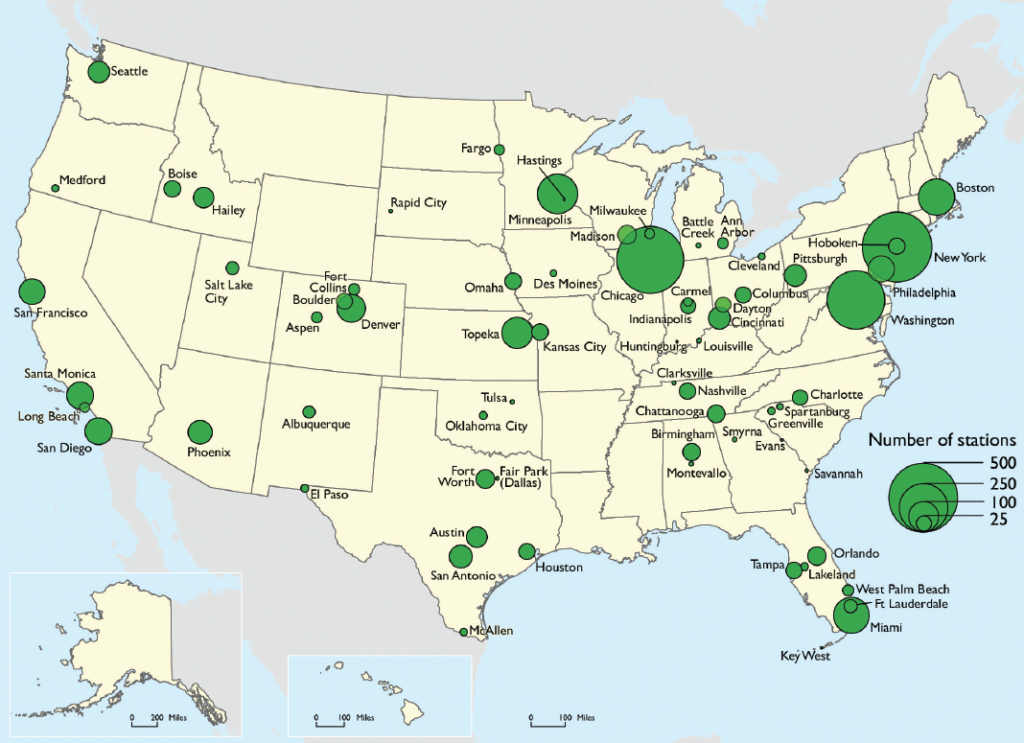
The number of bike-share stations in a given area is depicted here. A total of 46 bike-share systems operate the 2,655 stations in the U.S. For a fee, users can grab a bike at any docking station and then return the bike to another station in the system.
Source: U.S. Department of Transportation, Bureau of Transportation Statistics, Intermodal Passenger Connectivity Database (as of Feb. 2, 2016)
No Bike, No Problem
Another catalyst for bike infrastructure and trail-oriented development comes from bike-share programs. Anyone who has walked by bike-sharing stations in New York or Washington, D.C., might think this is just another way for tourists to get around the city. But the data and anecdotes tell a different story. Not only are shared bikes a catalyst boosting the number of riders in a city, but they also fill an important gap in the transportation continuum — that last mile between train, subway or parked car to a planned destination. And indications are that bike sharing also pays off with heightened home values. For example, according to ULI, homes in Montreal saw an average increase of $6,123 (U.S.) after the installation of local bike-share stations.
Boulder, Colorado, is not a place where one would expect to see bicycles as an alternative to cars, especially when you take the weather and the terrain into consideration. Yet, Boulder B-cycle, which launched five years ago, is one of the densest bike-sharing programs in the country when measured in terms of stations per capita. “We saw nearly 85,000 trips in 2015, which was close to a 100-percent increase over the previous year’s trips,” says Kevin Bell, marketing and communications director for the program. One-way trips especially have increased, and Bell says people typically use them in concert with commuting, where they will park their car and then use the bikes for quick errands around town during the day. The biggest challenge, Bell says, has been to have people understand that bike share is different than bike ownership.


